EXCLUSIVE INTERVIEW: WINNER OF SKY ARTS PORTRAIT ARTIST OF THE YEAR SERIES 10
7th Dec 2023
The results are in and the Sky Arts Portrait Artist of the Year Series 10 has been crowned! The deserving artist won a £10,000 commission to paint conservationist Dr Jane Goodall for the National Portrait Gallery. Their work was carefully selected by a panel of expert judges - award-winning artist Tai Shan Schierenberg, independent curator Kathleen Soriano, and art historian Kate Bryan.
Working with Winsor & Newton, Cass Art has supported the show since the first series in 2013. We caught up with the winner of Series 10 to find out more about their experience on the show and discuss their work…
WARNING SPOILERS BELOW!
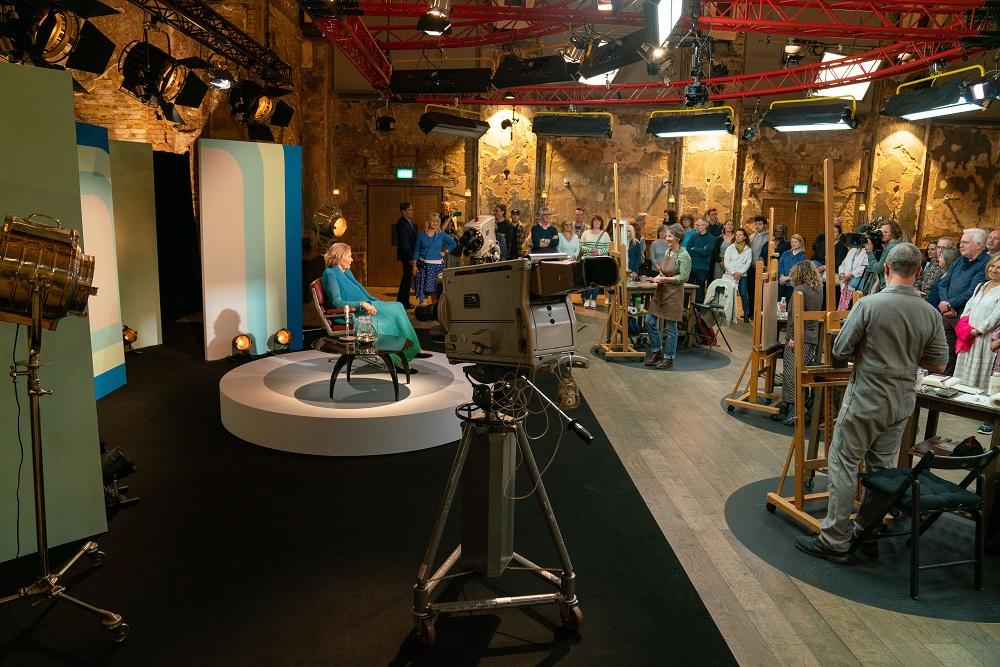
AND THE WINNER IS…. WENDY BARRATT!
Hi Wendy, firstly congratulations on winning Sky Arts Portrait Artist of the Year Series 10! How do you feel?
Thank you and hmmm... how do I feel? This has been such an overwhelming experience that it’s hard to put into words but I suppose my main feeling is elation coupled with gratitude along with a sense of an exciting new opportunity being placed before me.
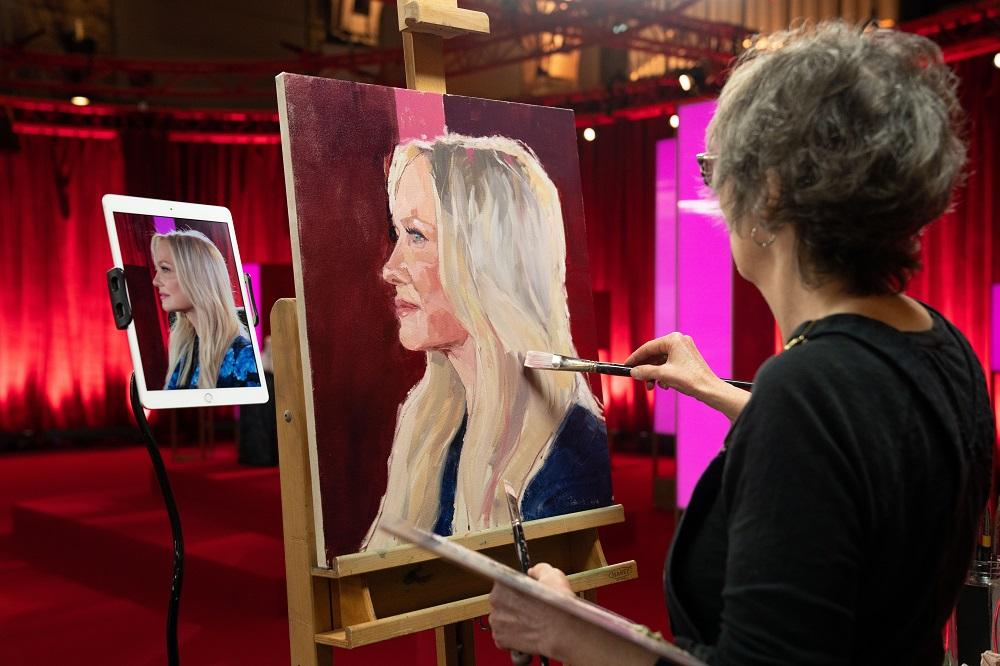
In the semi-final you painted 'Baby Spice', Radio DJ, TV host and entrepreneur Emma Bunton who chose your piece to take home! You seemed to have a great rapport with all of the sitters you painted in the series, is it important for you to try and get to know a person before embarking on their portrait?
Yes, for me it is VERY important. A good portrait is more than just what you’re seeing, it’s also about picking up on things between artist and sitter which can’t necessarily be seen but are felt. It is also important to see how the sitter holds themselves, it can be a very small simple gesture which can say a lot about that person.
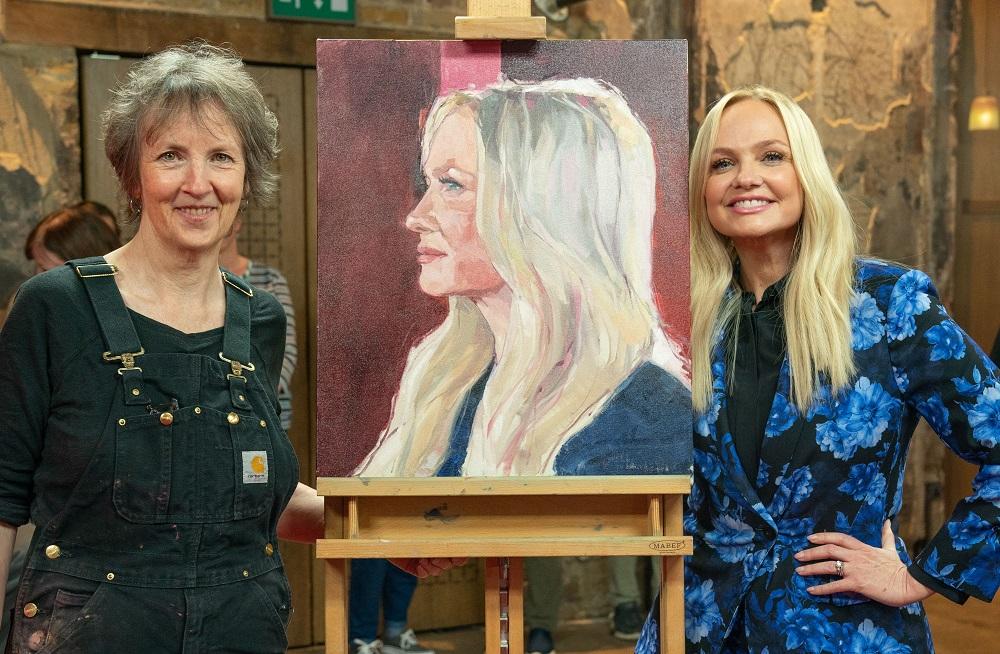
In the final you were tasked with painting Broadcaster, Author and Presenter on the series, the one and only Dame Joan Bakewell. It can often be hard to capture the perfect source imagery to work from, and you used a composite of images, preferring the look in her eyes in one photo and the mouth from another. Do you often work in this way and is it challenging to do so?
Yes, I do sometimes work like this when required. I have had many years of observing and drawing people from life so I’m aware that it’s not always just a question of painting say a mouth from one photo and the eyes and nose from another. All the features on the face have to work together and the slightest movement in one feature effects the other features. This is also true when drawing a full figure. I always have this in mind when using multiple images for one portrait and yes, this can be challenging at times.
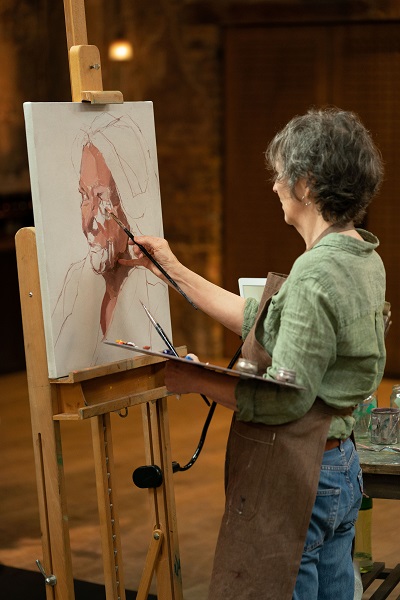
You started by sketching out lines in paint, capturing her likeness and character instantly. What is the key to capturing likeness?
It’s all about looking and more importantly 'seeing'. From an early age, I started to pick up for instance that not all heads were round, not all legs were a question of 2 parallel legs placed side by side. I remember being fascinated by seeing shapes that I wasn’t necessarily expecting to see. This is exactly how I still approach my drawing and is the perfect way to get a good likeness. When starting the drawing I become very analytical, looking for key shapes and landmarks and their relationship to one another. I don't assume anything about what I'm seeing but draw in response to direct observation and never assume that what I’ve already drawn is correct. You have to be prepared to change things that don’t work or look right at this early stage in the portrait.
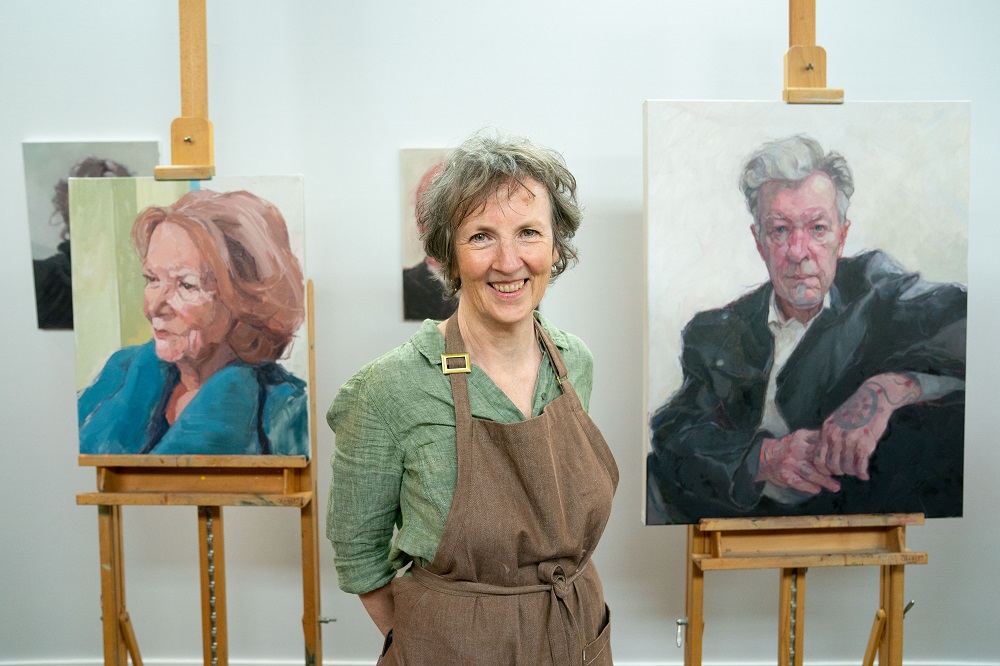
You were asked to complete a commission in your own time at home, and you chose to paint your husband Fred a circus performer and extrovert, however you decided to portray his quieter side. Can you talk us through your process for this one?
The advantage of painting someone you know really well, is just that… you already know them really well and so ideas about how I wanted to paint Fred were immediately clear. To the outside world, as you say, he is the performer and extrovert but at home he has a much quieter, deeper, contemplative side. I wanted to show a more serious and deeper side to his character… something more than his 'show biz' face and also something about his story and our close bond.
I had a clear vision of the format and composition for the painting and I set about sketching ideas from imagination and from sittings. I knew that I wanted to paint more than just his face and I definitely wanted to find a way to incorporate his hands into the painting. Fred’s hands are an important part of who he is as a circus performer, magician, musician and painter but they also tell a story of our connection as his left hand carries our 'wedding ring' tattoo of a ship’s wheel. I’d also decided Fred should be wearing his leather jacket which goes back to his circus days of living in trucks and touring Europe, something he is very nostalgic about.
I knew because of the limited timeframe fitting a time-lapse camera in my studio that I would have to paint entirely from photo and sketches - space just wouldn’t allow for a live sitting. One of the advantages was that I knew where he was if I needed to make more studies. Once I had a strong idea about the size and composition of the painting, I made a charcoal drawing to size. This would allow me to check that my idea worked in a way that adjustments could be made relatively quickly before I started putting paint to canvas.
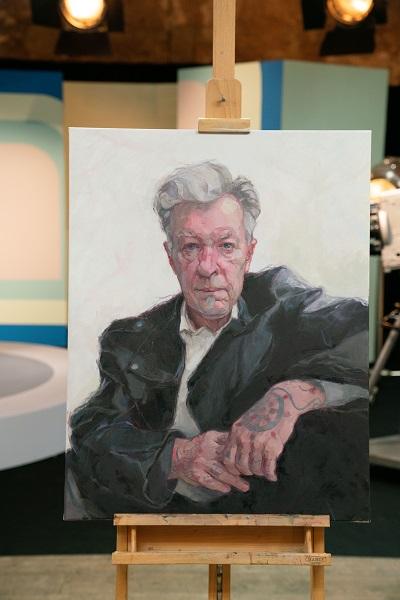
Although I was using a ready primed canvas, I tend to put on another coat or two of Michael Harding non-absorbent white gesso as I like the amount of 'tooth' it gives for my first drawing in paint. Once the gesso is dried I put on a very pale warm grey tint made of lamp black and burnt umber oil paint. Working from my 'to scale' drawing and an iPad image I started the drawing using a small hogs hair filbert brush and Caput Mortem paint. I’d already worked the drawing out on paper so I placed a few guiding marks on the canvas so I could keep to the size and proportions of the drawing. I still like to keep an expressive nature to my brushwork at this stage and find that observational drawing rather than sticking to a grid much more satisfying.
Once the drawing was looking right, I then started to mix the main colours for the painting. Making big mixes was essential as I was working on a relatively large canvas. Now starts the work of sculpting in hue and tone, aiming to get the whole canvas covered so that the relationships can be found, balanced and altered. I tend to work in a 'general' way at this stage without too much detail or finesse. I like to stay open to 'play' and 'mistakes' as sometimes they can really work in terms of colour, texture or gesture. At the end of this stage, I have often started to lose some of the original drawing and things may start to slip, sometimes in a good way, but parts that don’t work, I like to bring back by drawing back into the painting, often with a red line which is clearly visible and can help to get me back on track. I like to keep the lines expressive and playful as they can also add to the life of the painting. Next it’s going back in with bigger brushes to rebalance the hue, tones and textures of the paint. At this stage of the painting, I am using my instinct and trying to find marks which will tell the viewer more about the sitter than just a good drawing. I am trying to paint depth and emotion so have to feel with the paint rather than think about the paint.
At this stage I started to work with a fine rigger brush to pull out lines and colours which can guide the eye. They may not be there in reality but it is something I feel - as if I am touching the form and showing where my eyes are led over the surface (this is where Tai mentioned I was going a bit woo woo!)
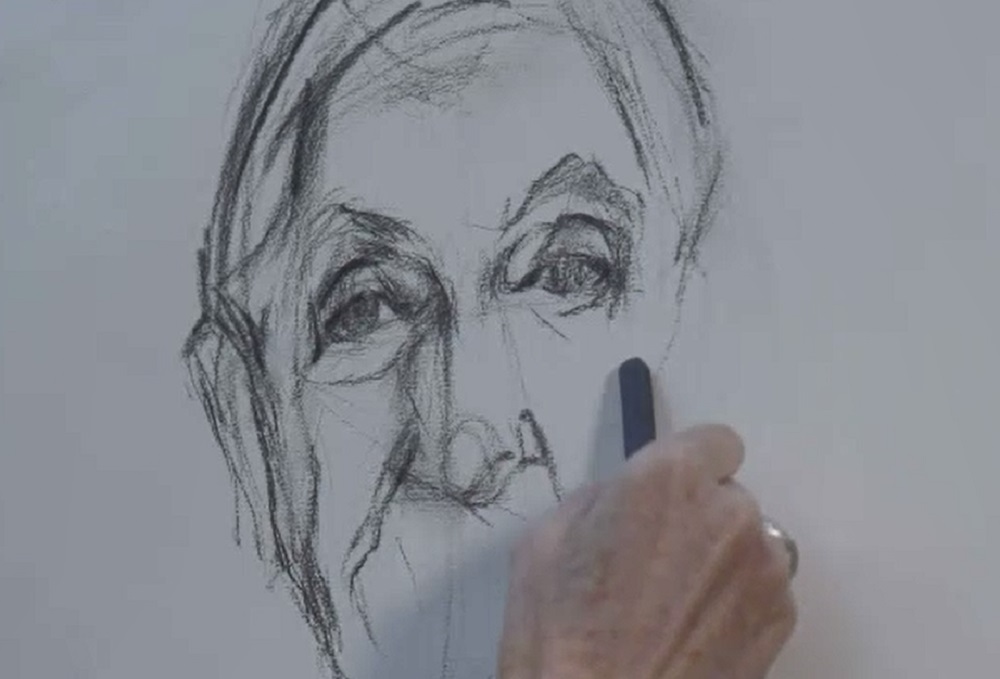
For your final commission for the National Portrait Gallery, you were asked to paint esteemed, activist and conservationist primatologist, Dr Jane Goodall, who is almost 90 years old. Did you feel a huge pressure to do her justice and how did you overcome that?
Yes, definitely, the pressure was enormous but I knew that if I let that feeling in too much I couldn’t do Jane justice. The pressure usually comes from the sitter but for this portrait it also came from wanting to bring the work of Jane and her cause into the limelight. As soon as I understood and empathised with Jane's thoughts and feelings about the portrait, an all important connection was made.
I knew that in order to do Jane and her cause justice, I would have to be true to myself. I needed to put aside the pressures of thoughts of where the painting was going to be hung and paint the humanity and person I had seen, met and chatted with. The normality of my studio environment and the music and podcasts I listen to whilst painting help to get me into 'the zone' once there I know I have a better chance of producing the painting I want to paint.
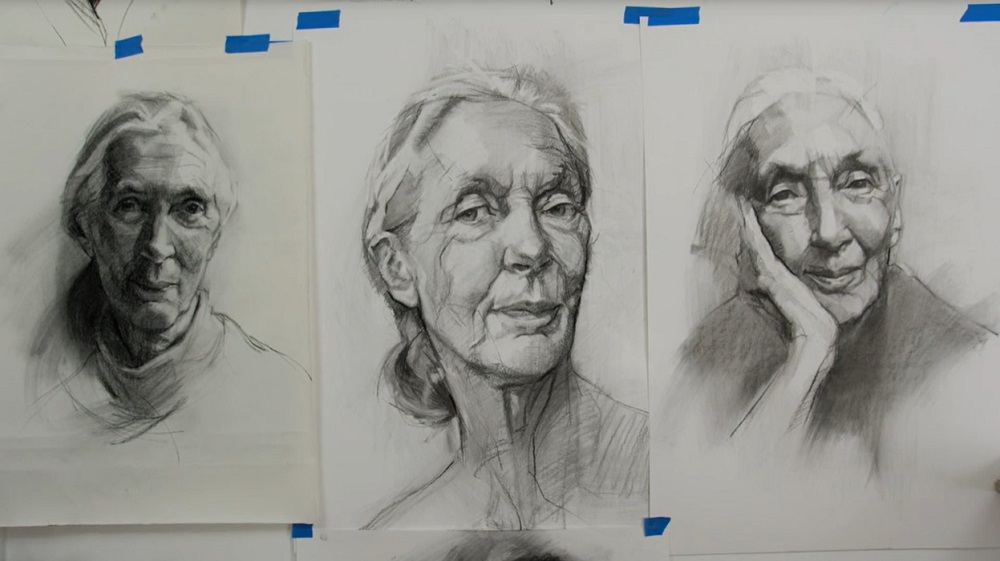
You made a wonderful life drawing of Dr Jane at the first sitting, and further charcoal drawings from your photographs, exploring different expressions and poses. We also saw you at your regular life drawing classes. For portraiture, do you prefer to work from life or from photographs, and is there a happy medium?
Thank you. For me working both from life and from photos can work well. I think working solely from a photo without knowing the person or having seen them move or heard them talk is the least enjoyable for me. I feel that something is missing - it's very one dimensional without a deeper understanding of who I am painting. I prefer to work from a mix of live sittings and photos.
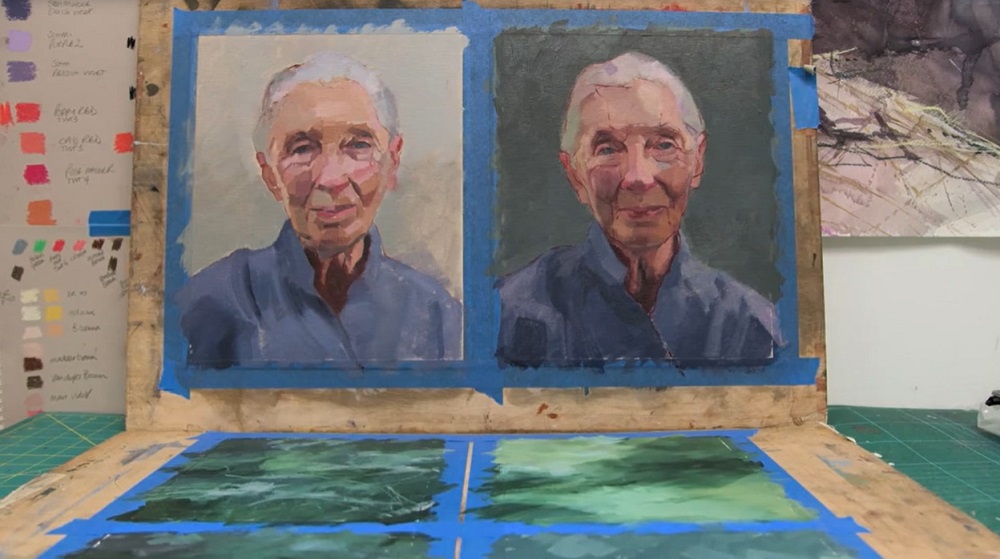
Dr Jane spoke about having two sides to her, her personal side and her 'icon' side, and she hoped the portrait would communicate her determination and compassion. Incredibly you managed to capture both and she was delighted with the final piece! How did you do it?
On first meeting Jane I was keen to put her at her ease. I knew she was a great storyteller and a keen observer so I felt we were both doing what we loved to do… observe and listen! I feel that we made that all important connection and her willingness to connect with me made my job a lot easier when it came to drawing her and taking photos that I knew I would have to work from.
Although it is harder to capture a likeness of someone that you are having a conversation with, it benefits in other ways. In the short time we were together I was able to pick up on incredibly useful information from her stories, how she held herself and how she observed me - that would all be part of the portrait.
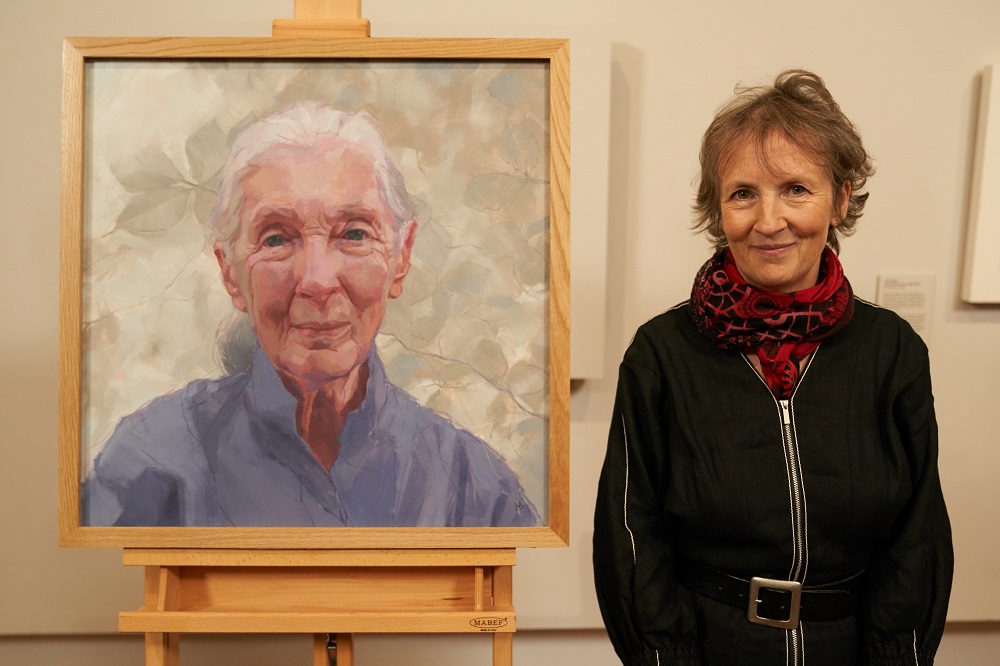
Backgrounds for portraits can often be a tricky balance of creating a space for the sitter whilst not detracting from them. You opted for a subtle leafy background for the final commission. How did you come to that decision?
I always consider the background but I’m not one for putting a lot of information into it. During the meeting I had with Jane in the garden of her family home, I asked her where in the world she would most like to live now. She said that most people think that it would be back in Gombe but that Gombe is no longer the place it was. She then pointed to the large beech tree in the garden, which is where she spent many a happy childhood hour, high up in the branches studying nature. I knew then that I wanted a nod to the beech tree without it being too literal.
Tai summed up your painting beautifully and said it’s 'beyond skill, it’s magic'. High praise indeed! You manage to create a connection with the viewer and the sitter in your works, which feels like magic, but it’s clear you are extremely dedicated, putting in the hours and searching for that connection through multiple preparatory drawings and paintings. How do you know when you’ve prepared enough and you’ve found what you’re looking for?
I think I just know. There’s no formula, it's just a gut feeling that’s exciting and just feels right. It’s an exciting feeling that I now just need to get my paint out.
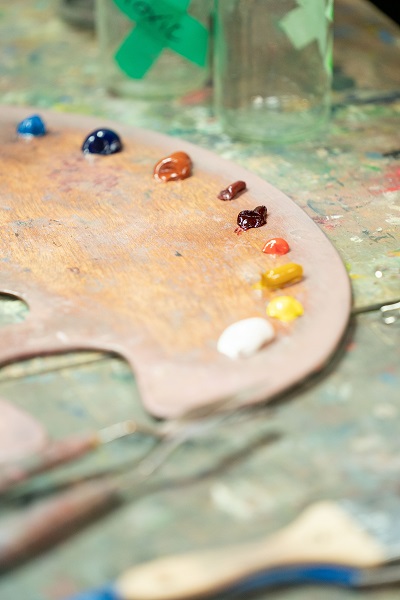
What are your go-to materials for drawing and painting, and do you use a specific colour palette?
I’ve worked in all sorts of mediums over the years and when in the life room, I tend to experiment more and perhaps try a medium which I haven’t used for a while. However, my 'go-tos' are willow charcoal (most makes), graphite (Faber-Castell Jumbo, Blackwing Matte) and Conté a Paris or Faber-Castell pastel pencils. When painting, I tend to always go for oils. I use range of brands from Michael Harding to Winsor & Newton. The main palette I use is Titanium white or Michael Harding Warm White, Lemon Yellow, Yellow Ochre, Burnt Sienna, Cadmium Red, Alizarin Claret, Caput Mortem, Ultramarine Blue, Cerulean Blue and Burnt Umber.
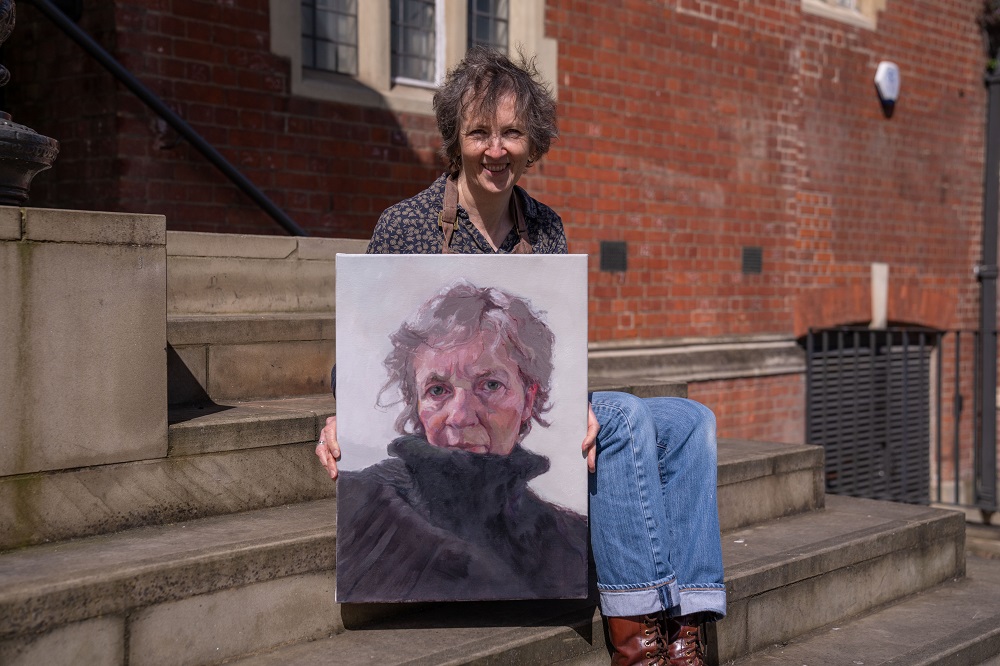
And finally, what’s next for you?
I’ve been waiting a while to find the right time to make the leap from graphic designer to full-time artist, especially since turning 60 a couple of years ago. It’s now or never right? Sky Portrait Artist of the Year was the perfect springboard for me to make that leap and was the push I needed. I am now working on new ideas for paintings and drawings so I can immerse myself into my work and develop as an artist… full-time!
Thanks Wendy! See more of Wendy’s work at wendybarratt.com or @wendybarrattart on Instagram.
Feeling inspired?
Entries for Portrait Artist of the Year Series 11 and Landscape Artist of the Year Series 10 are now open! Submit your portraits or landscapes for a chance to win a £10,000 commission and art materials from Cass Art.
Read our exclusive interviews with all the Sky Arts Portrait Artist of the Year Series Winners on the Cass Art Blog.



